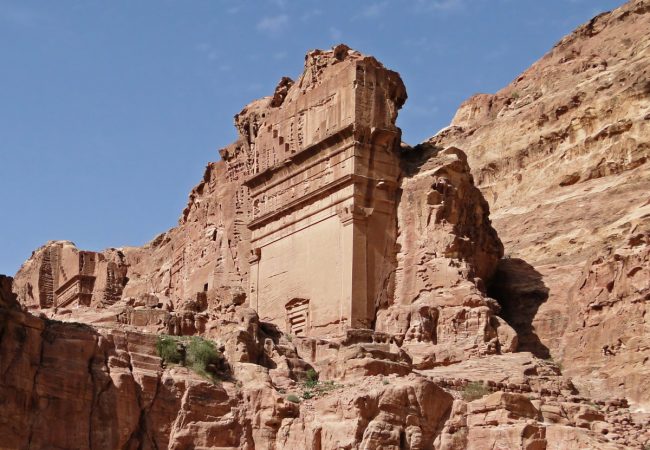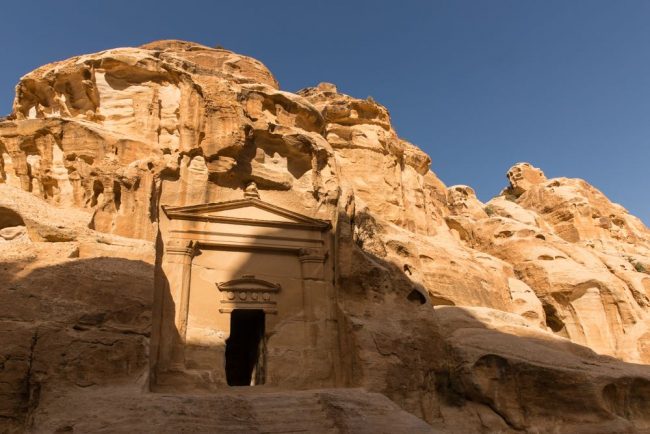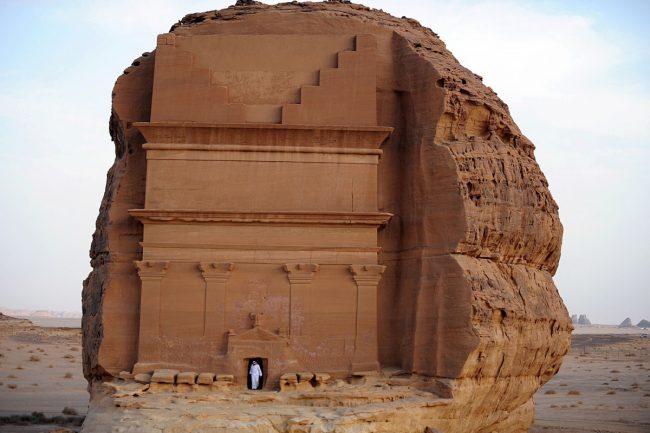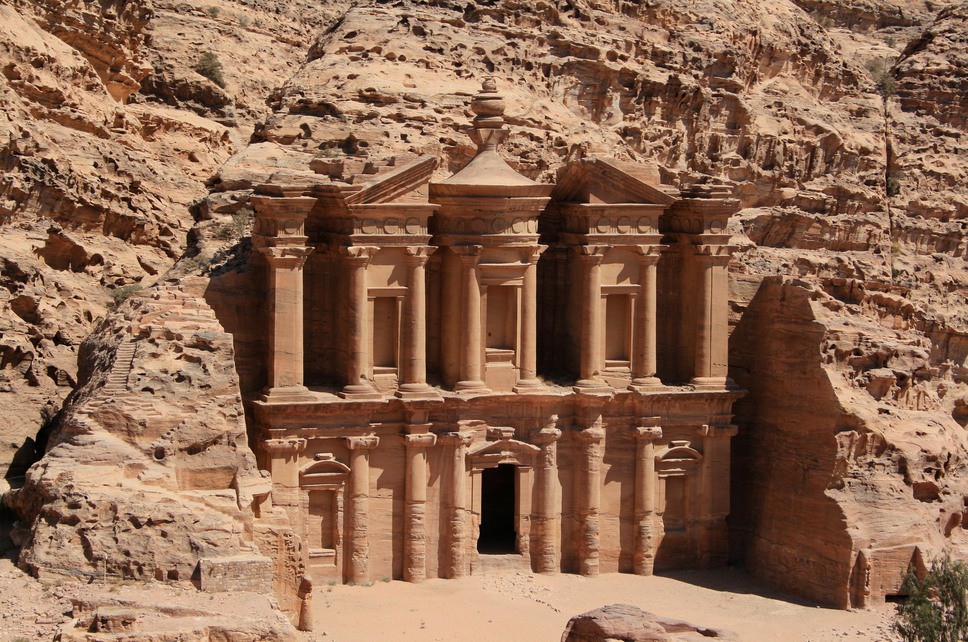
Petra is the most famous ancient site in Jordan, and is much larger than most people realize, especially if you have never visited this world class place. It is not known precisely when Petra was built, but the city began to prosper as the capital of the Nabataean Empire from the 1st century BC, which grew rich through trade in frankincense, myrrh, and spices. Petra was later annexed to the Roman Empire and continued to thrive until a large earthquake in 363 AD destroyed much of the city in the 4th century AD.

Little Petra is located about half an hour drive from the main Petra site, and clearly was made by the same builders. The fact that the sandstone at both locations is 7 out of 10 in hardness negates the idea that the nomadic Nabateans were the ones responsible…where would they have picked up the skills to do such work?

Some 550 kilometers away, in Saudi Arabia we find Mada’in Saleh, which looks remarkably similar to Petra and Little Petra in terms of sculpting technique. Mada’in Saleh, also called “Al-Hijr” or “Hegra”, is an archaeological site located in the Sector of Al-`Ula within Al Madinah Region, the Hejaz, Saudi Arabia. It is said that the majority of the remains date from the Nabatean kingdom.


The sheer scale of these places, along with the fact that the stone is very hard and would require thousands of hardened steel tools to make them, tells us that the Nabateans likely found these sites abandoned, and chose to occupy them.

